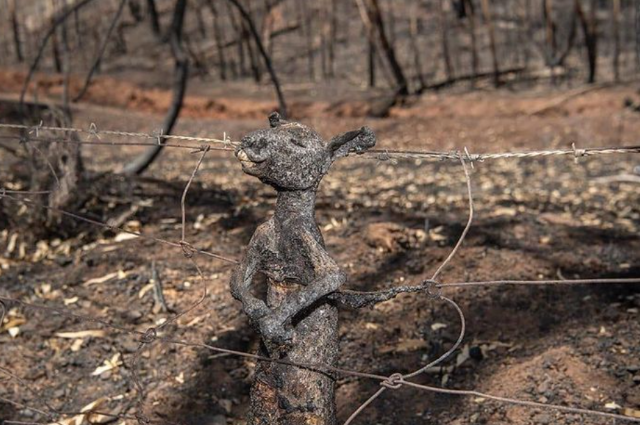
Photo by Katerina Kerdi on Unsplash
Jatinga, a peaceful village nestled in the heart of Assam, is famed for its stunning landscapes and a strange phenomenon that has left the world baffled. With a population of just 2,500, this otherwise quiet place becomes the center of attention every year from September to November. During these months, a bizarre occurrence takes place, earning it the frightening nickname of the "bird suicide" capital. What's truly mysterious is that these events unfold exclusively from 6 p.m. to 9:30 p.m., involving not only local birds but also a variety of migratory species.
Approximately 40 different species, including the tiger bittern, little egret, black bittern, pond heron, Indian pitta, and kingfishers, have been found partaking in this terrifying phenomenon. Jatinga, often dubbed one of the most bizarre places on Earth, remains covered in mystery as no concrete explanation has surfaced to account for these mass bird suicides. Some weird videos and theories have surfaced on different social media platforms. A part of the masses believes that the village is cursed, signifying a disastrous event. Others speculate that the area's excessive magnetic fields might be the culprit. Yet, despite these assumptions, the true cause of these strange deaths remains unattainable. For years, locals have attributed the phenomenon to evil spirits, describing how the birds appear dazed and disoriented before crashing into trees, lights, and buildings. Adding to the mystery, Jatinga remains cut off from the outside world for nine months due to natural barriers, with nighttime entry strictly prohibited.
The roots of this mysterious occurrence trace back to 1910, although it only gained international attention in 1957 when ornithologists E.P. Gee and Salim Ali, during their exploration of the "Wild Life of India," stumbled upon the village's strange secret. They discovered that the phenomenon occurred after the monsoon season's conclusion, typically in September and October. During these months, flooding displaces birds from their nests in Assam and neighboring areas, prompting their migration through Jatinga. This journey of Gee and Salim Ali through Jatinga took a bizarre turn for the birds, as flocks would collide into buildings, walls, and trees, leading to their instant demise. Over 44 species of local and migratory birds fell victim to these abnormal deaths. What adds to the puzzle is that most of these bird species should not be active at night.
Numerous ornithologists have visited Jatinga in an attempt to solve this odd behavior. Some theories attribute it to high winds and the elevation of Jatinga's surrounding hills, causing disorientation in the birds, while others point to unusual weather patterns altering the magnetic properties of underground water. According to some experts, the birds at Jatinga are naturally drawn to light, and during dark nights, they tend to move toward the lights of the village. As they approach the ground, they abruptly become tangled in bamboo traps set by the villagers. Ornithologists, specialists in bird study, have clarified this situation to the villagers. They explained that the birds were not intentionally harming themselves but were simply attracted to the lights. An expert named Anwaruddin Choudhury also observed that it was primarily young birds who were more susceptible to being drawn by the lights and subsequently caught in traps. However, none of these theories have provided a complete explanation, leaving the skies above Jatinga riddled with a mystery that has confused experts worldwide.
While Jatinga's bird suicides remain a mysterious natural happening, they serve as a stark reminder of the often devastating impact human development can have on wildlife and the environment. This incident is not an isolated case; similar patterns of harm to animals and birds have emerged worldwide. One apparent example is the devastating Australian bushfires that devastated the country from June 2019 to February 2020. Recent research by WWF revealed that the toll on wildlife was nearly three times higher than earlier estimates. A heart-wrenching image from the Bush fire also shocked people worldwide, depicting a young kangaroo trapped in barbed wire, likely in an attempt to flee the flames. (This image contains graphic content; viewer discretion is advised.) These fires, fueled by human-induced climate change and land development, led to the destruction of habitats, forced starvation, severe burns, and countless deaths among Australia's rich and diverse wildlife.
Numerous human activities have significantly contributed to the devastation of wildlife. Human-induced factors have led to the destruction of natural habitats and ecosystems, endangering countless species. Some studies have even investigated the effects of electromagnetic radiation from technologies like phone towers on different bird species, shedding light on the harmful consequences of human activities on wildlife. These studies reveal that the expansion of electromagnetic fields, largely generated by technology and infrastructure, can disrupt the behaviors of birds such as navigation, communication, and reproduction. Such disruptions can lead to reduced breeding success, changed migration patterns, and overall population declines in various bird species. Understanding these impacts emphasizes the importance of preventing creations like electromagnetic radiation to protect the natural world and its diverse ecosystems. Such ongoing impact of human development on our planet emphasizes the urgency of responsible environmental conservation.
The Jatinga incident is also an example of how humans are still unable to fully understand and prevent nature's destructive forces. Some effort is necessary to safeguard not only the diverse array of cohabiting species but also the delicate balance within our ecosystems. By taking responsible steps to preserve natural habitats, we can work towards a sustainable future for all life on Earth. It is a collective responsibility to ensure the well-being of our planet and its inhabitants.
. . .
Reference:

